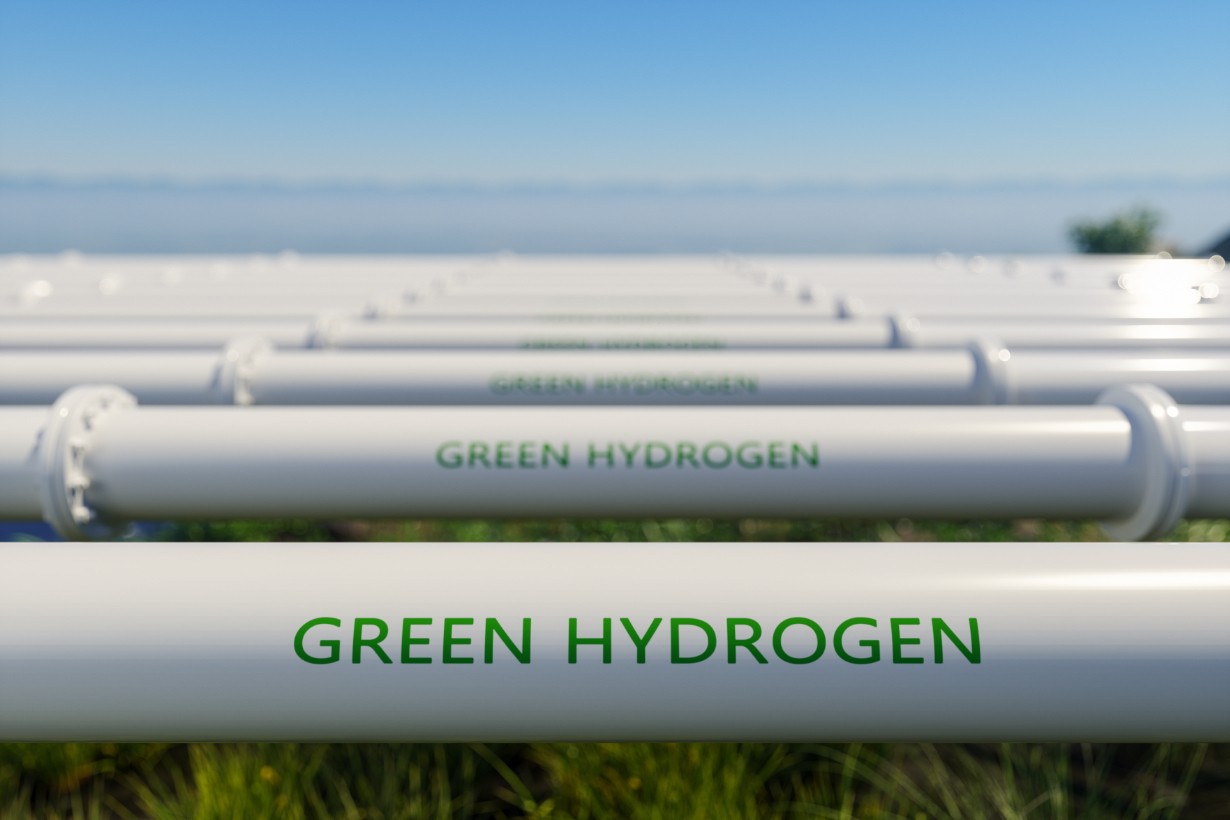CLOSE
About Elements
TANAKA is a leading company in the field of precious metals.
Advanced materials and solutions that support societal progress, the development stories behind them, the voices of engineers, and our management philosophy and vision—
Elements is an online media platform that shares insights that lead to a better society and a more prosperous future for the planet under the slogan “Mastering Precious Metals.”

Australian Startup Mimics Trees to Make Cheaper Green Hydrogen

For emissions-free hydrogen to become a widespread climate solution, it has to get much cheaper. A startup in Australia claims it has a way to do that.
Hysata, based in Wollongong, south of Sydney, has raised $111 million from investors to scale up its technology to produce hydrogen from electricity. The company’s advantage is the energy efficiency of its electrolyzer, a machine that separates hydrogen out of water.
Green hydrogen is currently much more expensive than the alternative that’s made from polluting fossil fuels, hindering its adoption. But investment is ramping up to try and close that gap, with governments around the world providing hefty subsidies to incentivize its production. Spending on electrolyzers more than tripled last year to $8.7 billion, according to BloombergNEF.
Hydrogen, a key input in making ammonia and refining oil, is today mostly made with fossil fuel. That resulted in some 900 million metric tons of CO2 emissions in 2022, according to the IEA. Using renewable electricity to produce the gas, which only produces water when burned, can make it more climate friendly. So-called green hydrogen could potentially displace natural gas and coal in other heavy-emitting processes like steel production, shipping and power storage that have few alternatives to lower emissions.
To understand Hysata’s technology, it helps to look inside an electrolyzer. The machines apply electricity to water and split the compound into its constituent elements of hydrogen and oxygen. It’s quite easy to make an electrolyzer at home that generates small quantities of hydrogen. All you need is two pieces of solid metal, some wire, salty water and a source of electricity.
The challenge of making a good electrolyzer is to ensure that it converts as much of the electricity into making hydrogen as possible. That’s because the price of hydrogen is mainly determined by the cost of electricity used to make it: higher efficiency means lower cost.
Today’s state-of-the-art commercial electrolyzers convert about 75% of electricity into hydrogen. One of the big reasons for the loss in energy comes down to bubbles, which cause water to lose contact with the metal that’s crucial for water splitting.
Given that electrolyzers convert liquid water into hydrogen, you might think bubbles are inevitable. Hysata says it’s found a breakthrough to avoid them, though. The company’s technique is the product of a decade of work by Gerry Swiegers, Hysata’s co-founder and senior professor at the University of Wollongong, and his team in Australia.
After trying different materials, including Gore-Tex, his team of researchers landed on using a weird property of water to avoid making bubbles. That property is capillary action, which is when a liquid in a narrow space can rise against the force of gravity. It’s one of the forces trees use to draw water from the ground all the way to the leaves at the top.
The resulting electrolyzer involves a thin layer sponge in the middle, which draws water upward through capillary action. On either side of the sponge are porous metal plates containing nickel, which come into contact with a thin layer of water. When electricity is applied to this cell, water is split into hydrogen and oxygen that first dissolve in the liquid and are transported out through the porous electrodes without making bubbles. The resulting efficiency, Swiegers says, is 95%.
“I couldn’t believe it was real,” Swiegers said. “I thought there may be an error in our experiments, so we got my best people to reproduce the experiments repeatedly. And we kept getting these good results.”
Hysata’s estimates suggest the discovery will result in cost savings of “double digits.” Part of that comes from requiring less energy to make hydrogen, but it also comes from not needing equipment that other electrolyzers use to manage cooling or high-pressure pumps.
Swiegers founded Hysata in 2021 along with Chief Executive Officer Paul Barrett and Chief Product Officer Tom Campey. The company aims to use the money it has raised now to scale up its workforce and manufacturing capacity to commercialize a technology.
Hysata’s investors include the venture arms of British oil major BP Plc and wind turbine maker Vestas Wind Systems A/S, South Korean steel maker POSCO Holdings Inc and Templewater, an investment group co-founded by ex-Deutsche Bank AG banker Cliff Zhang.
Hysata isn’t the only company that claims to have found a way to make hydrogen with 95% efficiency. Israel-based H2Pro says that its two-step process for green hydrogen can also breach that mark. There are also companies that use heat and electricity to make green hydrogen, claiming it reduces the overall price of making the gas.
Hysata’s Barrett says that he expects the startup’s commercial-scale units will be deployed as soon as 2025. That’s a quick turnaround for a three-year-old startup. “As far as I know, none of the startups claiming breakthroughs in efficiency have yet scaled up their manufacturing,” said Martin Tengler, head of hydrogen at BloombergNEF.
Still, the potential market for electrolyzers is rapidly growing. The world is projected to produce 9.6 million metric tons of green hydrogen by 2030, up from about 400,000 tons this year, according to BloombergNEF. While that’s a major increase, it remains far below the amount global governments say they need to reach their climate ambitions.
This article was written by Will Mathis and Akshat Rathi from Bloomberg and was legally licensed through the DiveMarketplace by Industry Dive. Please direct all licensing questions to legal@industrydive.com.
![]()







